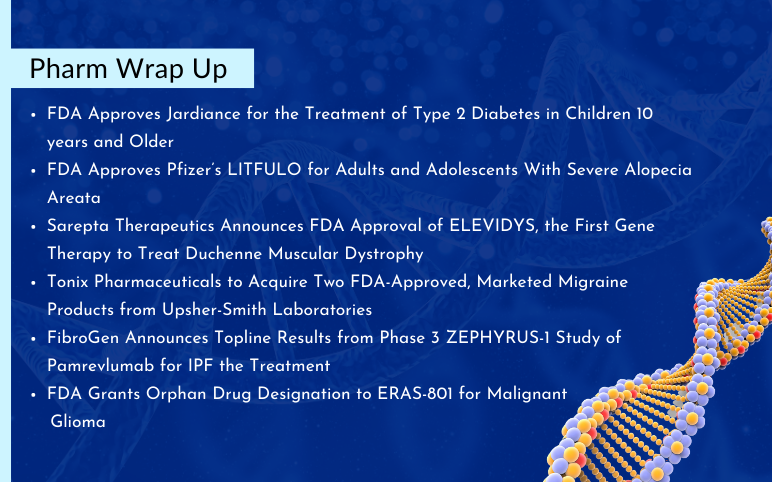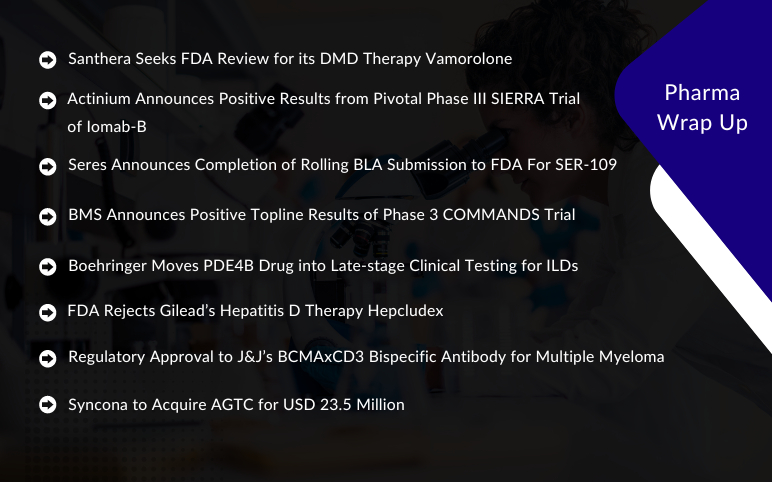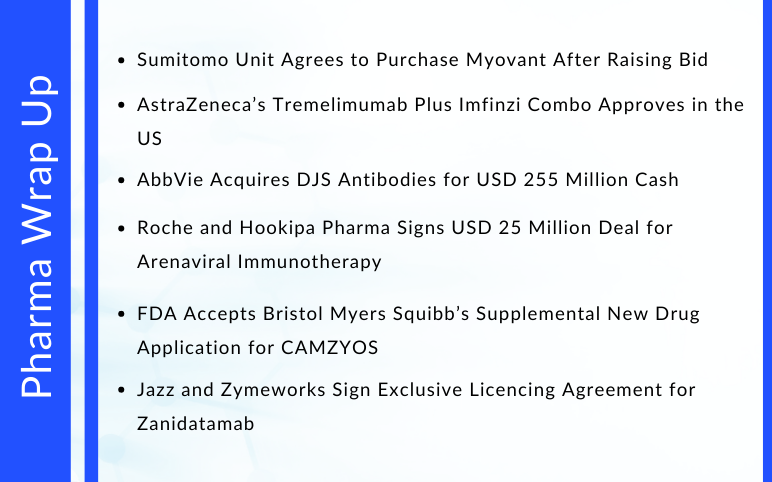PDE4-B Inhibitors: A Promising Target for Idiopathic Pulmonary Fibrosis Treatment
Sep 26, 2022
Idiopathic pulmonary fibrosis (IPF) is a rare, sporadic, and fatal interstitial lung disease. As the morbidity and mortality rates associated with IPF remain high, prompt idiopathic pulmonary fibrosis treatment is critical to safeguard individuals’ lung function, reduce the risk of acute exacerbations, and improve outcomes.
According to the National Institutes of Health (NIH), idiopathic pulmonary fibrosis affects approximately 100,000 people in the United States. Every year, between 30,000 and 40,000 new cases are diagnosed. Idiopathic pulmonary fibrosis affects 13 to 20 people out of every 100,000 people worldwide
As per DelveInsight’s latest published Idiopathic Pulmonary Fibrosis Epidemiology Forecast Report, the total diagnosed prevalent cases of idiopathic pulmonary fibrosis in the 7MM was 194K cases in 2021, which is expected to rise at a CAGR of 1.1% during the study period (2019–2032).
Downloads
Article in PDF
Recent Articles
- Idiopathic Pulmonary Fibrosis (IPF) – When to start and what is coming in the race to treat the d...
- Idiopathic Pulmonary Fibrosis –Scarring For A Lifetime
- Idiopathic Pulmonary Fibrosis Market Landscape and Forecast
- Sumitomo to Purchase Myovant; AstraZeneca’s Tremelimumab Plus Imfinzi Approved in the US; AbbVie ...
- Coherus Biosciences’ Toripalimab; Keymed’s CMG901; Biogen Alzheimer’s Drug Aduhelm; Vicore’s Digi...
Moreover, the highest diagnosed prevalent cases of idiopathic pulmonary fibrosis were accounted by the US in 2021, with 94K cases in the 7MM, which is expected to show a steep rise soon due to the improvement in idiopathic pulmonary fibrosis diagnostic testing and increasing population.
Among the European countries, Germany had the highest diagnosed prevalent population of idiopathic pulmonary fibrosis, followed by the UK. On the other hand, Spain had the lowest diagnosed prevalent population.
There are currently only two FDA-approved drugs for idiopathic pulmonary fibrosis treatment, which include Esbriet (cytokine inhibitor) developed by Roche, and Ofev (tyrosine kinase inhibitor) developed by Boehringer Ingelheim.
With an existing strong presence in the idiopathic pulmonary fibrosis treatment market, Boehringer is accelerating the development of another drug named BI 1015550 with a novel mechanism of action to treat IPF patients. BI 1015550 represents the first molecule in the class of phosphodiesterase 4B (PDE4B) inhibitors that is being studied for idiopathic pulmonary fibrosis treatment and other progressive fibrosing interstitial lung diseases (ILDs). The drug has combined anti-fibrotic and anti-inflammatory effects. It recently received Breakthrough Designation by the US FDA in February 2022 for idiopathic pulmonary fibrosis treatment.
The promising 12-week data from the Phase II (NCT04419506) that investigated the safety and efficacy of BI 1015550 18 mg twice daily in IPF patients was presented at the American Thoracic Society (ATS) International Conference 2022. In the study, a total of 147 patients with forced vital capacity (FVC) ≥45% and who were either not on antifibrotic therapy (AF) or were on a stable dose of antifibrotic therapy for at least 8 weeks before study entry were randomized 2:1 to receive either BI 1015550 or placebo for 12 weeks. The idiopathic pulmonary fibrosis diagnosis in patients enrolled in the study was based on 2018 ATS/ERS/JRS/ALAT guidelines.
The primary study outcome was the change in FVC (measured in mL) from baseline at week 12. In patients who were not on approved antifibrotics, the median change in FVC was increased by 5.7 mL for BI 1015550 and decreased by 81.7 mL for the placebo arm; in patients who were already on antifibrotic therapy, the median change in FVC was increased by 2.7 mL for BI 1015550 and decreased by 59.2 mL for the placebo arm. It was found that BI 1015550 had a >98% probability of being superior to placebo in slowing down the worsening of lung function in people with IPF.
Over 12 weeks, the idiopathic pulmonary fibrosis clinical trial also met its secondary goal, demonstrating acceptable safety and tolerability in IPF patients. However, the proportion of patients experiencing any adverse event (AE) was greater in patients treated with BI 1015550 compared to placebo in both AF patients (73% versus 68%) and non-AF (65% versus 52%). The most prevalent adverse event was diarrhea.
Overall, the study concluded that BI 1015550 at 18 mg BID, either given alone or in combination with antifibrotic medication, preserved lung function in IPF patients. The Company expects to initiate a phase III program for the drug later this year. The drug can be a promising oral therapeutic option for idiopathic pulmonary fibrosis treatment and other fibro-proliferative illnesses due to its preferential inhibition of PDE4B and anticipated enhanced tolerability in humans, as well as its anti-inflammatory and antifibrotic properties.
Apart from Boehringer Ingelheim, several other pharma giants across the globe are diligently working toward the development of novel treatment therapies with a considerable amount of success over the years. To date, there are several emerging market players, including FibroGen, Hoffmann-La Roche Ltd, United Therapeutics, Pliant Therapeutics, Inc., Galecto Biotech, Horizon Therapeutics, CSL Behring, and others that are developing drugs for idiopathic pulmonary fibrosis treatment.
The promising therapies in the idiopathic pulmonary fibrosis pipeline by these goliaths include Pamrevlumab, PRM-151, Tyvaso, PLN-74809, GB0139, HZN-825, Garadacimab, and others. The anticipated launch of these idiopathic pulmonary fibrosis drugs will boost the market.
Currently, as per DelveInsight analysis, the idiopathic pulmonary fibrosis market size in seven major markets was USD 3,167 million in 2021, which is further expected to increase by 2032 at a Compound Annual Growth Rate (CAGR) of 6.6% for the study period (2019–2032).
Furthermore, the severe subset of IPF remains opportunistic, with few therapies available to these IPF patients. Expanding research efforts to treat and detect pulmonary fibrosis, as well as how it develops, will be critical in disease diagnosis and drug development. Any advancement in this field will benefit the idiopathic pulmonary fibrosis treatment market.

FAQs
The term "idiopathic" refers to a condition for which no cause has been identified. Scarring causes stiffness in the lungs, making breathing more difficult. Idiopathic pulmonary fibrosis is the most common type of pulmonary fibrosis. Scarring is caused by lung disease.
Idiopathic pulmonary fibrosis symptoms appear gradually and may not appear until the disease has caused significant lung damage. If they occur, they are likely to deteriorate over time. Some of the most common signs and symptoms of idiopathic pulmonary fibrosis include shortness of breath (dyspnea), dry coughing, which eventually leads to chronic coughing in approximately 85% of people with IPF.
IPF causes irreversible and progressive lung damage, which worsens over time. In some cases, certain drugs can help to slow it down. Lung transplantation is occasionally recommended for IPF patients.
There are several diagnostic tools available, and the consensus guidelines for identifying IPF are well defined. Pulmonary function tests, laboratory tests, Chest imaging tests, lung biopsy, and others are used for idiopathic pulmonary fibrosis diagnosis.
The treatment aims to slow disease progression, alleviate symptoms, avoid acute exacerbations, and increase survival. For IPF, two antifibrotic agents, ESBRIET (Roche) and OFEV (Boehringer Ingelheim) have been approved. Both drugs have been shown to slow disease progression but have no effect on mortality.
The emerging idiopathic pulmonary fibrosis drugs such as Pamrevlumab (FibroGen), PRM-151 (Roche), Tyvaso (United Therapeutics), PLN-74809 (Pliant Therapeutics), GB0139 (Galecto Biotech), HZN-825 (Horizon Therapeutics), Garadacimab (CSL Behring), BI 1015550 (Boehringer Ingelheim), and others are in various idiopathic pulmonary fibrosis clinical trials stages and will soon launch in the market.
The IPF market size in seven major markets was USD 3,167 million in 2021, which is further expected to increase by 2032 at a CAGR of 6.6% for the study period (2019–2032).
Downloads
Article in PDF
Recent Articles
- Idiopathic Pulmonary Fibrosis: Recent Scenario
- Roche, Boehringer tout; Pfizer, Bristol-Myers got sued; FDA commissioner unveils; EpicGenetics ex...
- Idiopathic Pulmonary Fibrosis (IPF) – When to start and what is coming in the race to treat the d...
- Sumitomo to Purchase Myovant; AstraZeneca’s Tremelimumab Plus Imfinzi Approved in the US; AbbVie ...
- FDA Approves Jardiance for Type 2 Diabetes; FDA Approves Pfizer’s LITFULO for Alopecia Areata; Sa...



